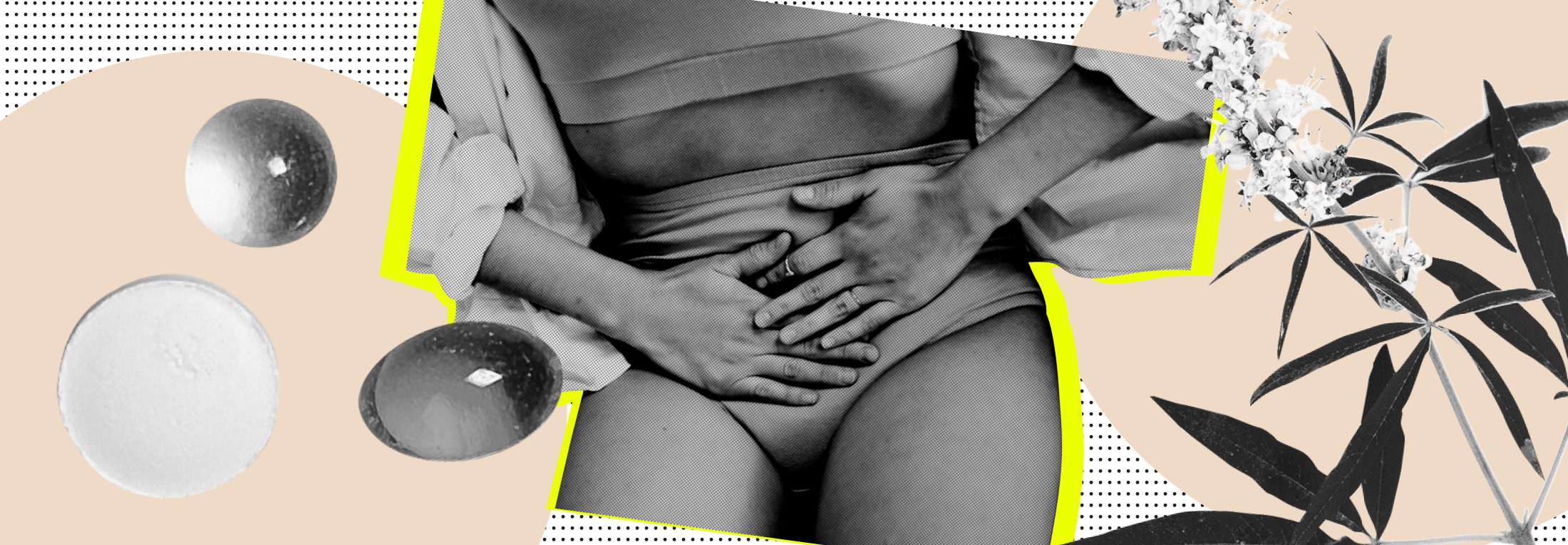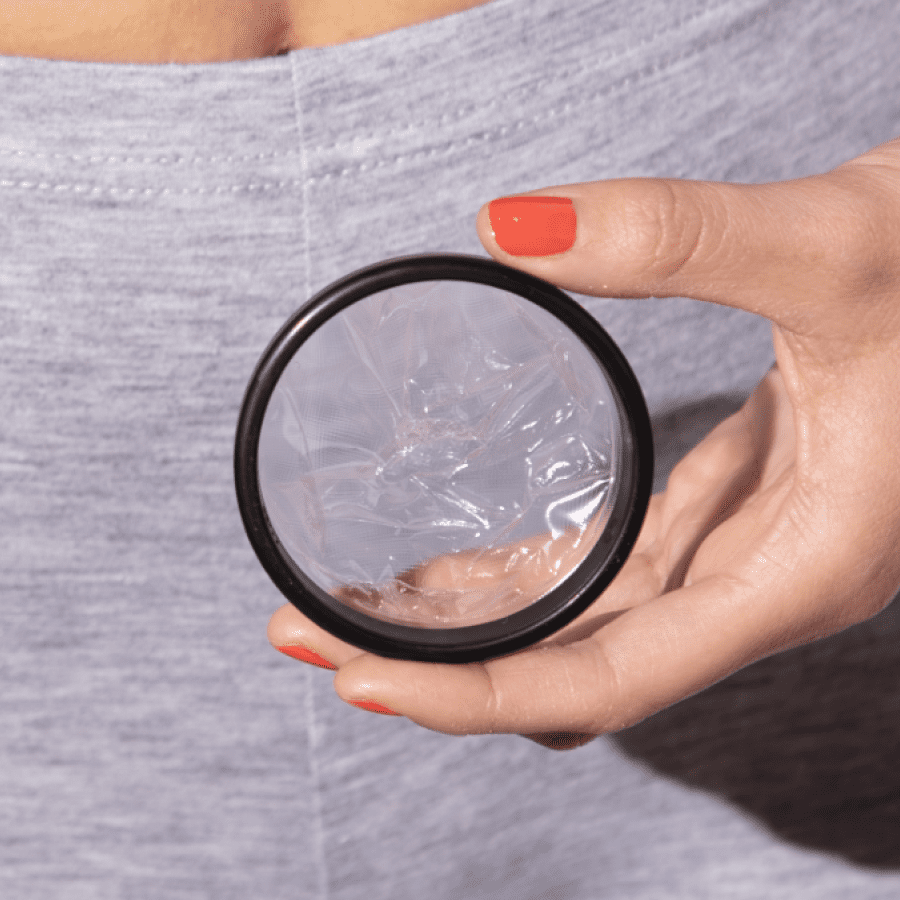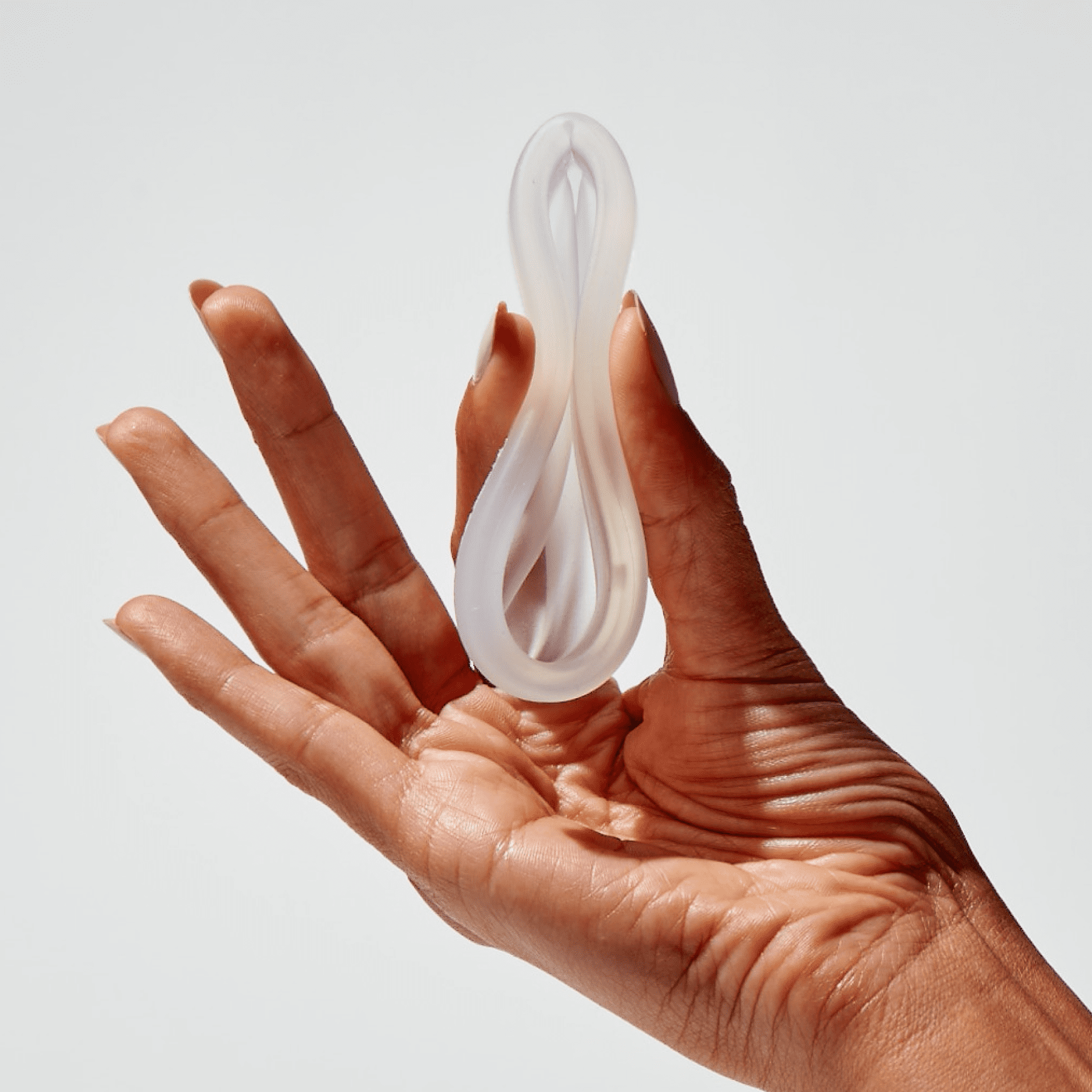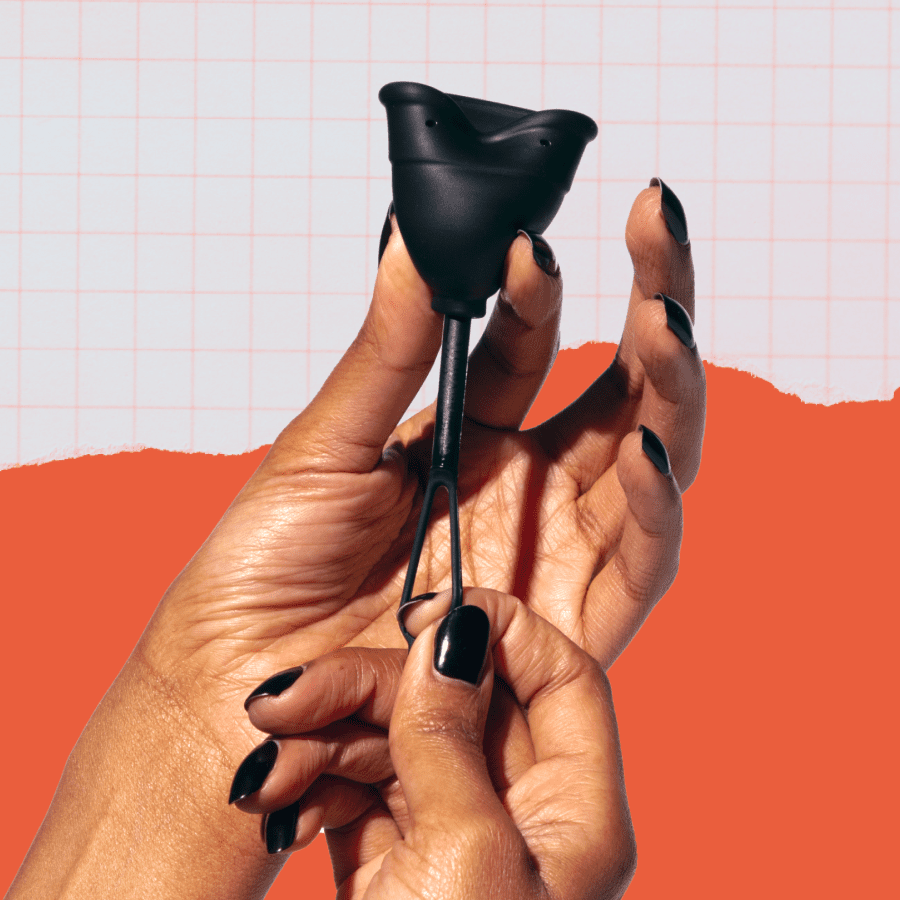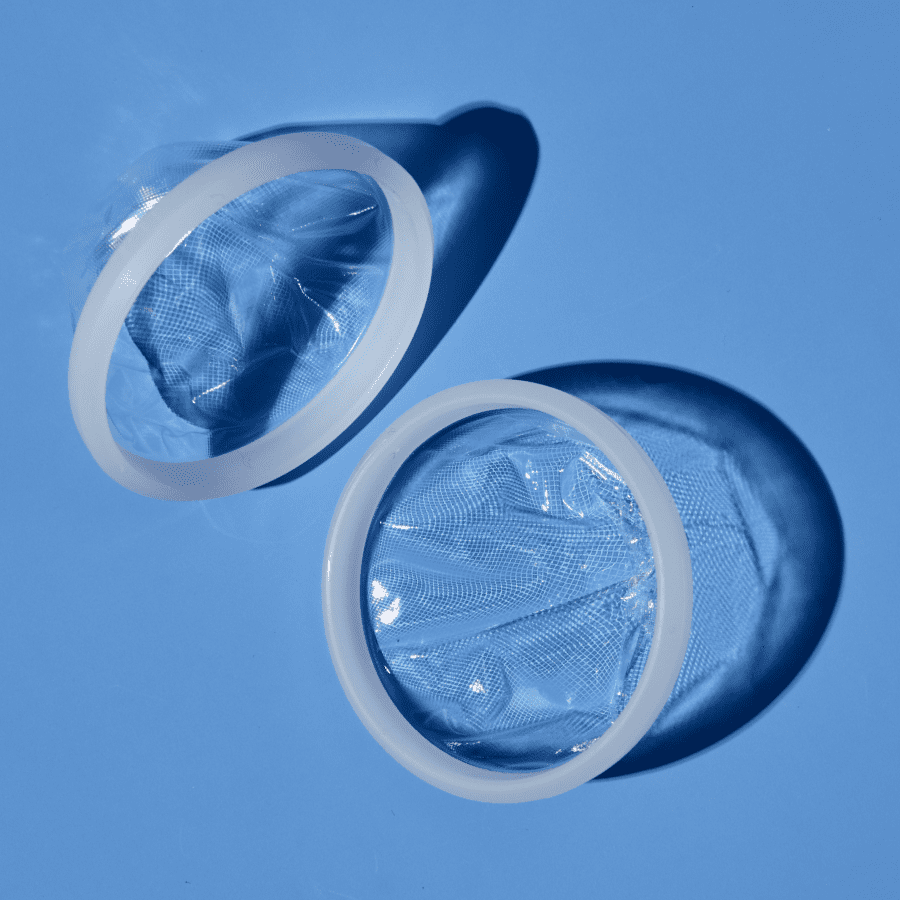The best supplements & OTC pain relievers for period cramps
Cramps got you down? Here’s what to take for period pain
You know the feeling: It’s that deep-from-within, slow-burn sort of ache that starts in your pelvis and gradually makes its way into your lower back, abdomen, or even spreads down your legs. Yep, period pain can be a total buzzkill—but what’s even more frustrating is not knowing how to make it stop with the right pain reliever or self-care routine.
Some of us have known our cycle intimately for decades (we’ve been besties for a long time), while others may see it as a newer acquaintance. But whether your period is a two-day or week-plus-long visitor, it takes many years of trial and error to master numbing that dull, continuously aching, throbbing, and cramping feeling in your body—not to mention the actual blood. Part of this process is figuring out what products work best for you.
You know that saying from the State Farm commercials, “We know a thing or two because we’ve seen a thing or two”? Well, we’re not going to say that. But what we will say is that we do know periods. We know what works some of the time, what’s scientifically proven, and what fails to do a damn thing (is this mic on?).
In this post, we look into some of the best supplements and over-the-counter pain relievers to help alleviate those pesky (and for some, totally debilitating) cramps.
How and why period cramps happen
Menstrual cycles come in all shapes and sizes. While your specific period (thanks, genetics) might dictate your weekly plans, affect your mood, or encourage you to use up your sick days, you might find that your best friend, Sam, can simply pop an Advil and instantly feel better.
In other words? There’s a pain scale—and, for some, “normal” will be around a 2 or a 3. For others, normal might crank all the way up to a 9 or 10.
The pain might come and go from day to day, or even disappear altogether after day one. For most, b + will stick around for one or two days.
While this pain will most likely be mild in nature, some can experience intense pain for several days. This pain that we so gingerly speak of is called dysmenorrhea. The symptoms can cause diarrhea, nausea, dizziness, headache, and vomiting. Does this sound all too familiar?
While we’re all well-versed in how we feel during our period, we should probably discuss why we’re feeling this way. Did you hear that bell? Health class is in session! First, during the first half of your menstrual cycle, the endometrium expands and renews itself to prepare for a possible pregnancy—creating a nice home for the potential implantation of an embryo.
If pregnancy doesn’t happen, your blood vessels open up, the uterine lining begins to shed, and the uterine muscle contracts to expel your menstrual fluid through the small opening in your cervix and down through your vagina.
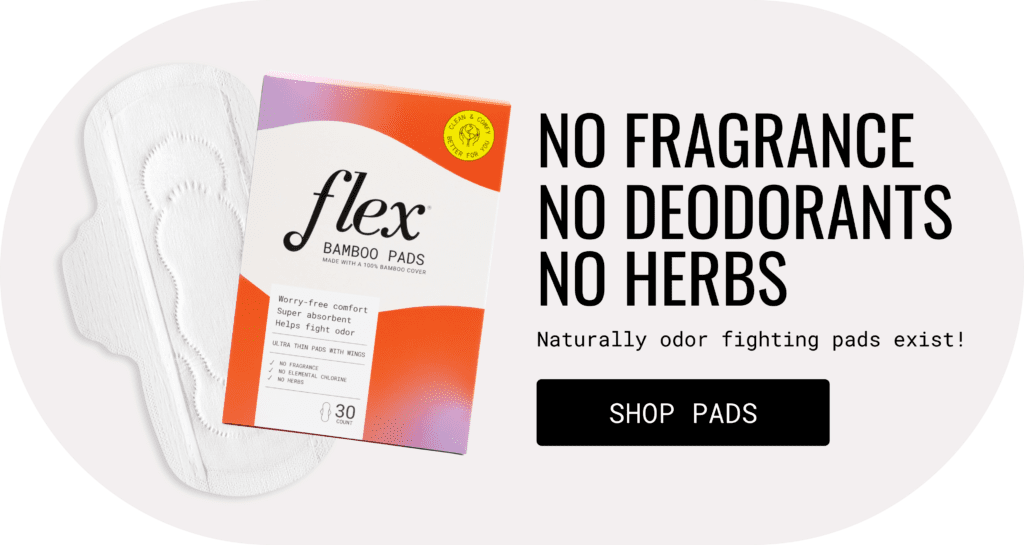

Now, while there’s a lot of emphasis on cramps during your actual period, it shouldn’t be overlooked that you can have cramps a few days before your period, as well. While this may seem like a slap in the face, it’s actually kind of pretty cool. It is like we have this early alert system within our bodies tipping us off that there’s a storm brewing.
What about other early menstrual symptoms, though? One of the most common complaints we hear about is—yes, you already know it—period poops. You’re at work or in class, minding your own business, and suddenly it’s time to go (literally). And the kicker of it is that you never get a heads up. You can be in a meeting one minute and, before you know it, you’re running like a wide receiver to the end zone.
This is all thanks to prostaglandins: A type of hormone your body produces that are also responsible for uterine cramps (and even for the contractions and cervical dilation that occurs during labor and birth). Prostaglandins can cause the smooth muscle in your intestines to cramp, too, which is what triggers those urgent bathroom trips.
If your body overproduces prostaglandins, you may be more likely to experience excessively painful periods or heavy bleeding (menorrhagia). In either case, it’s a good idea to talk to a healthcare provider—especially if your menstrual cramp pain or bleeding has recently increased to a point at which it’s becoming disruptive to your day-to-day or outright unbearable.
Remedies & natural supplements for PMS and period cramps
Let’s take a poll here. Think back to the time when you first found out about your period. It may have been before you ever got it or after the fact. Whichever the case, when you found out about cramps, how many of you were told you could mask the period cramp pain with OTC pain relievers?
I bring this up because it was the end-all-be-all when it came to the relief “prescribed” to lesson period discomfort. Nowadays, Advil and Aleve are still solid choices (more on that in a bit) but we see more research published on supplements and natural remedies that may reduce your cramps, too. Of course, keep in mind that most supplements take time to build up in your system—and quality matters, too.
As always, talk to your doctor before incorporating any new herbs or supplements into your diet. That said, here’s what the research points us towards as most promising for period pain prevention or relief:
Calcium:
Known for more than its ability to circulate blood, release hormones, and move muscles, calcium has also been found to relieve menstrual cramps. Try taking it in supplement form or, better yet, load up on foods like yogurt, leafy greens, and salmon.1
Cannabidiol (CBD):
Scientists recently discovered that, similar to NSAIDs, CBD is able to inhibit COX-2—the enzyme responsible for producing prostaglandins. 2 Nowadays, CBD can be purchased almost anywhere in the United States. If you want to give it a shot as a natural pain reliever for period cramps, you can find it in multiple forms: As an oral supplement, a topical balm, or even as a vaginal suppository.
Chasteberry:
Also known as chaste tree, chasteberry is promoted as a dietary supplement to help with symptoms of premenstrual syndrome (PMS), breast pain associated with the menstrual cycle, infertility, and other conditions.3 In a study, menstruators who took a daily 20mg Chasteberry tablet daily over the course of three months, experienced a significant reduction of their PMS symptoms. No wonder why so many menstruators consider Chasteberry one of the best supplements for PMS.
Fennel:
According to NutritionFacts.org, fennel is another promising herbal remedy for period pain: “Researchers believe fennel inhibits uterine contractions that are stimulated by prostaglandins. In one study, approximately 80 percent of young women who took capsules containing 30 milligrams of fennel extract 4 times a day for 3 days prior to the start of their menstrual period experienced less pain than those who took a placebo.” 4 You can take it in capsules, drink fennel tea, or even buy the entire plant at your local grocery store (it tastes delicious roasted).
Ginger:
Research suggests that ginger may help to protect against the increases in inflammation by inhibiting the body’s production of prostaglandins. Try drinking it as a tea or adding raw ginger to a smoothie or stir fry to lessen menstrual cramps. 5


H2O:
It may seem incredibly obvious, but by drinking water, you’ll not only decrease bloating (which also helps with period pain) but you’ll also help your body fight off inflammation. Hydration is key!6
Magnesium:
Known to help with bowel regularity, sleep, and muscle cramps, magnesium has also been found to reduce pain caused by menstruation. An open trial of magnesium as a treatment for dysmenorrhoea found that study participants who took the supplement had significantly reduced symptoms when compared with the pretreatment controls.7 Available in capsule form, you can also get lots of magnesium from leafy greens, nuts, seeds, and whole grains.
Omega-3 Fatty Acids:
Found in fish, flaxseed, and fish oil dietary supplements, Omega-3s contribute to your brain and eye development—but they can also help your body cope with period pain. In one double-blind crossover study, women with primary dysmenorrhea (ages 18-22 years) experienced a marked reduction in pain intensity after three months of treatment with omega-3 fatty acids.8
Keep in mind that these home remedies are promising, but not proven, in medical research. No harm in giving them a try, but remember to talk to your doctor if your period pain is severe.
The best OTC pain relievers for period cramps
It may come as a shock to you that certain OTC medications—even some of the brands that claim to be designed for menstrual pain relief—may not be the most effective at getting to the source of your cramps. Why? Oftentimes, they don’t contain the right active ingredients.
There are two major groups of OTC pain relievers available for purchase. One is acetaminophen; the other group consists of nonsteroidal anti-inflammatory drugs (or NSAIDs).
NSAIDs include aspirin, ibuprofen, ketoprofen, and naproxen sodium. While acetaminophen and NSAIDs both reduce fever and relieve pain caused by muscle aches and stiffness, they do so via different mechanisms. The TL;DR is that only NSAIDs can reduce swelling and inflammation.9
According to the American Academy of Family Physicians, “NSAIDs stop a certain kind of enzyme in your body from working. These are called cyclooxygenase enzymes (also called COX enzymes). COX enzymes speed up your body’s production of hormone-like substances called prostaglandins. Prostaglandins irritate your nerve endings and cause you to feel pain.”10
Throwback to what we discussed earlier on: Your best bet for combatting the painful, inflammatory effects of prostaglandins is by taking an NSAID pain reliever like Advil, Motrin, or Aleve.
Dealing with period cramps: Period products that help with cramps
It wasn’t that long ago that we had just a few options when it came to period products. You either wore pads or tampons or a combination of the two. Today, boy is that different!
One new product that can actually help with period cramps is Flex Disc™. Designed with ComfortSeal™ technology, the disc’s flexible rim moves with your body when your uterus contracts—and since it sits in the vaginal fornix (the widest part of the vagina with the fewest nerve endings, located just below the cervix), most users can’t feel it at all once inserted.
When compared to their previous period product, 60% of surveyed Flex Disc users reported less period pain. Even if you have a known condition that causes severe pain and cramping (like uterine fibroids or endometriosis), Flex Disc is safe to use and may reduce discomfort significantly—especially when compared to tampons.
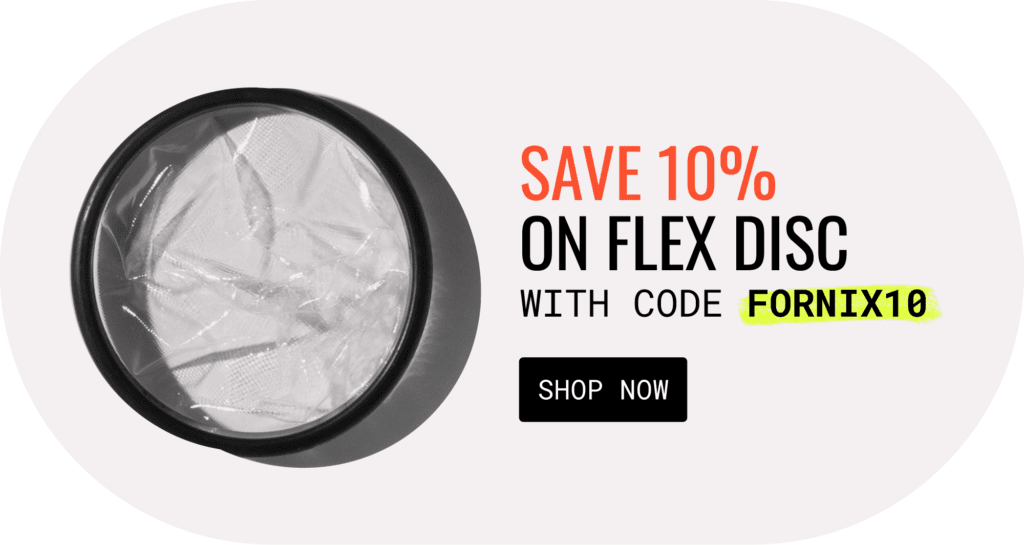

Are there any natural or home remedies that can provide relief from period pain?
Yes, natural remedies like applying a heating pad on the lower abdomen, engaging in light physical activity, consuming ginger or turmeric tea, practicing relaxation techniques, and maintaining a healthy diet can help alleviate period pain. These methods are often preferred by those seeking drug-free pain relief for period cramps.
When to talk to your doctor: Prescription relief for severe cramps
As always, talk to your doctor if you experience menstrual cramps that severely disrupt your daily life. Of course, your period won’t be all puppies and butterflies, but it shouldn’t be so painful that you have to call out sick from work or school.
If your pain goes from mild to severe, it’s a good idea to check in with your healthcare provider and rule out any potential underlying health conditions (such as endometriosis, fibroids, or cysts) and/or point you to the best pain reliever for period cramps based on your particular circumstances.
If endometriosis is suspected, your doctor may recommend a pelvic exam, ultrasound, or even laparoscopy to investigate further.
Oral contraceptives (hormonal birth control pills) may help with severe period pain due to endometriosis or other reproductive health conditions. For some, prescription pain relief may be an option, as well: Both diclofenac (a.k.a. Voltaren) and mefenamic acid (Ponstel) are occasionally prescribed as a “level up” from your typical over-the-counter NSAIDs. Keep in mind that, while neither are addictive, they can cause side effects such as stomach ulcers if used frequently.
We hope it goes without saying, but if you ever get to a point where you’re unable to move or stand up straight because of period pain, go to the emergency room.
Lastly, if you feel you’ve lost more blood than you think you should have (remember, most people lose less than 16 teaspoons of blood during their period with 6-8 being the average) or you’ve been bleeding heavily (at least one tampon or pad an hour for more than two hours), contact your doctor right away. 11
This article is informational only and is not offered as medical advice, nor does it substitute for a consultation with your physician. If you have any gynecological/medical concerns or conditions, please consult your physician.
© 2024 The Flex Company. All Rights Reserved.
- Shobeiri, F., Araste, F. E., Ebrahimi, R., Jenabi, E., & Nazari, M. (2017). Effect of calcium on premenstrual syndrome: A double-blind randomized clinical trial. Obstetrics & gynecology science, 60(1), 100–105. https://doi.org/10.5468/ogs.2017.60.1.100[↩]
- Takeda, S., Misawa, K., Yamamoto, I., & Watanabe, K. (2008). Cannabidiolic acid as a selective cyclooxygenase-2 inhibitory component in cannabis. Drug metabolism and disposition: the biological fate of chemicals, 36(9), 1917–1921. https://doi.org/10.1124/dmd.108.020909[↩]
- Chasteberry. (2020, July). NCCIH. https://www.nccih.nih.gov/health/chasteberry[↩]
- Fennel seeds vs. ginger for menstrual cramps and PMS. (2018, July 19). NutritionFacts.org. https://nutritionfacts.org/2018/07/19/fennel-seeds-vs-ginger-for-menstrual-cramps-and-pms/[↩]
- Kashefi, F., Khajehei, M., Tabatabaeichehr, M., Alavinia, M., & Asili, J. (2014). Comparison of the effect of ginger and zinc sulfate on primary dysmenorrhea: A placebo-controlled randomized trial. Pain Management Nursing, 15(4), 826-833. https://doi.org/10.1016/j.pmn.2013.09.001[↩]
- Home remedies: Menstrual cramps. (2017, September 1). Mayo Clinic News Network. https://newsnetwork.mayoclinic.org/discussion/home-remedies-menstrual-cramps/[↩]
- Pattanittum, P., Kunyanone, N., Brown, J., Sangkomkamhang, U. S., Barnes, J., Seyfoddin, V., & Marjoribanks, J. (2016). Dietary supplements for dysmenorrhoea. The Cochrane database of systematic reviews, 3(3), CD002124. https://doi.org/10.1002/14651858.CD002124.pub2[↩]
- Rahbar, N., Asgharzadeh, N., & Ghorbani, R. (2012). Effect of omega-3 fatty acids on intensity of primary dysmenorrhea. International Journal of Gynaecology and Obstetrics, 117(1), 45–47. https://doi.org/10.1016/j.ijgo.2011.11.019[↩]
- Pain relievers: Understanding your options. (2004, March 1). AAFP American Academy of Family Physicians. https://www.aafp.org/afp/2004/0301/p1199.html[↩]
- Editorial Staff. (2004, September 1). Prescription nonsteroidal anti-inflammatory medicines. Familydoctor.org. https://familydoctor.org/prescription-nonsteroidal-anti-inflammatory-medicines/[↩]
- Menorrhagia (heavy menstrual bleeding) – symptoms and causes. (2020, July 1). Mayo Clinic. https://www.mayoclinic.org/diseases-conditions/menorrhagia/symptoms-causes/syc-20352829[↩]
